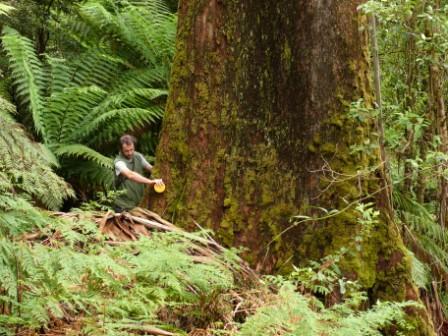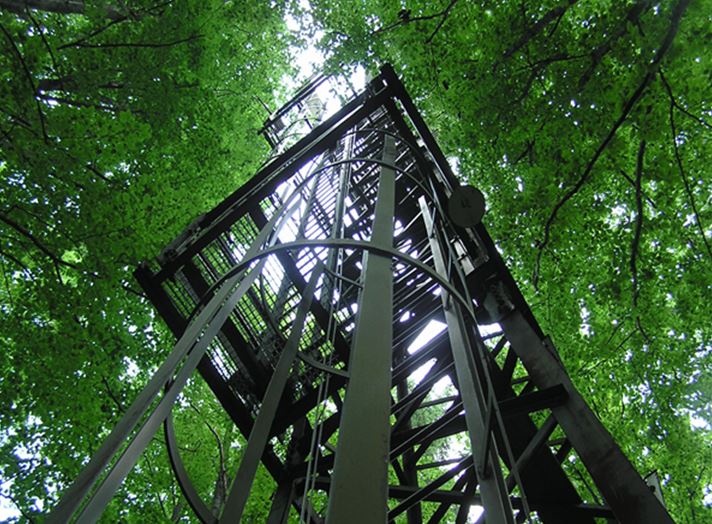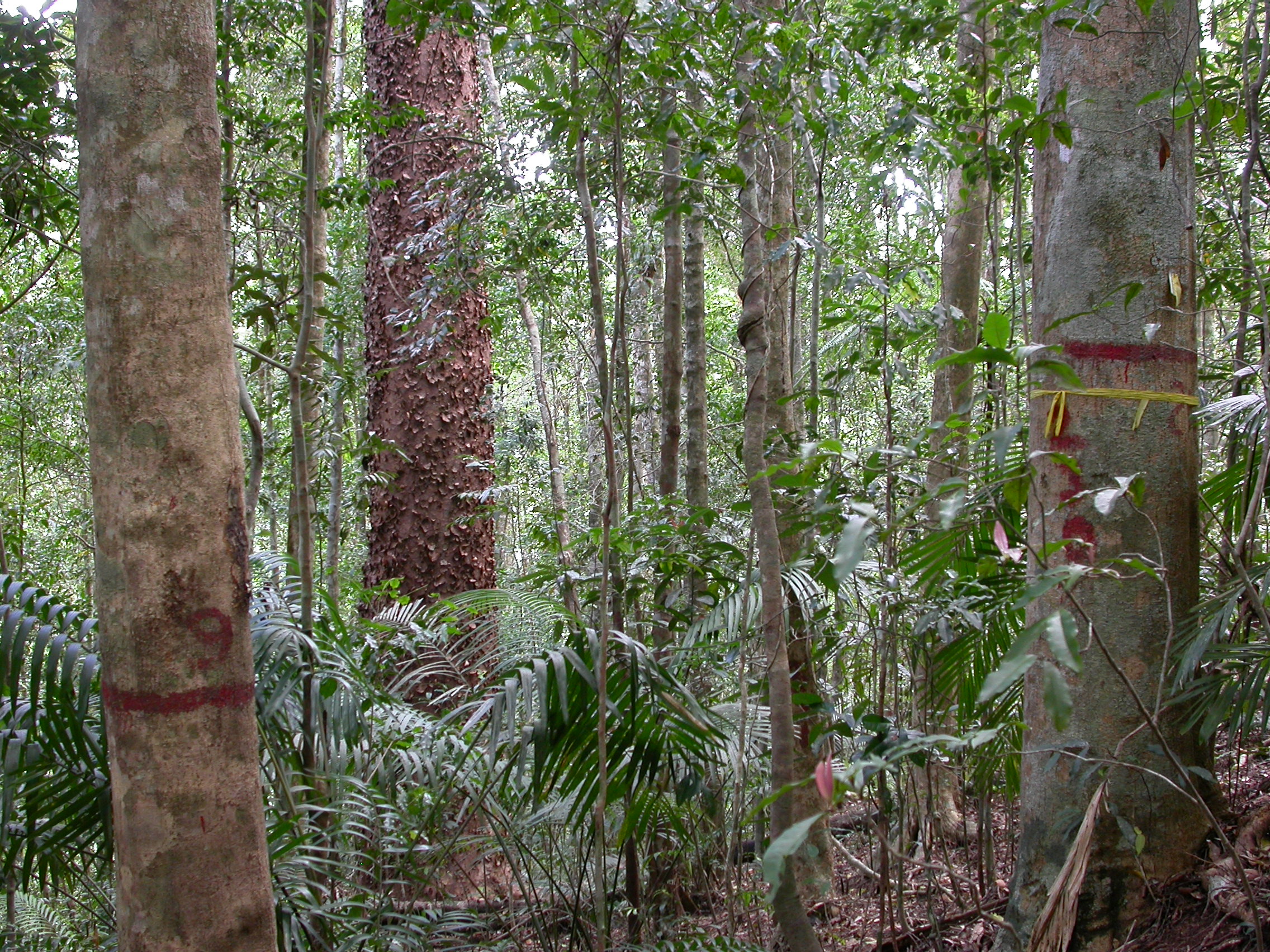canopy cover rate
Type of resources
Available actions
Topics
Keywords
Contact for the resource
Provided by
Years
Formats
Representation types
-
Field work - plot measurements (n=18, 50 m x 50 m)
-
The Victorian Tall Eucalypt Forest Plot Network is located in the Central Highlands of Victoria, Australia and its research infrastructure is comprised of stratified 1-ha long-term plots within 3-ha monitoring sites. Between 2012 and 2018 the Victorian Tall Eucalypt Forest Plot Network was a member of the Long Term Ecological Research Network (LTERN), Australia, a facility of the Australian Government's Terrestrial Ecosystem Research Network (TERN).
-

FORBIO is an innovative, large-scale forest biodiversity experiment established in Belgium between 2009 and 2012. The acronym stands for assessment of the effects of tree species diversity on FORest BIOdiversity and ecosystem functioning. At three sites with contrasting site conditions, plots were planted with one up to four tree species. Various aspects of ecosystem functioning will be compared between plots that differ in tree species richness but have developed under the same abiotic conditions. The sites are located in Gedinne (Gribelle, Gouverneurs), Hechtel-Eksel and Zedelgem.
-

FORBIO is an innovative, large-scale forest biodiversity experiment established in Belgium between 2009 and 2012. The acronym stands for assessment of the effects of tree species diversity on FORest BIOdiversity and ecosystem functioning. At three sites with contrasting site conditions, plots were planted with one up to four tree species. Various aspects of ecosystem functioning will be compared between plots that differ in tree species richness but have developed under the same abiotic conditions. The sites are located in Gedinne (Gribelle, Gouverneurs), Hechtel-Eksel and Zedelgem.
-
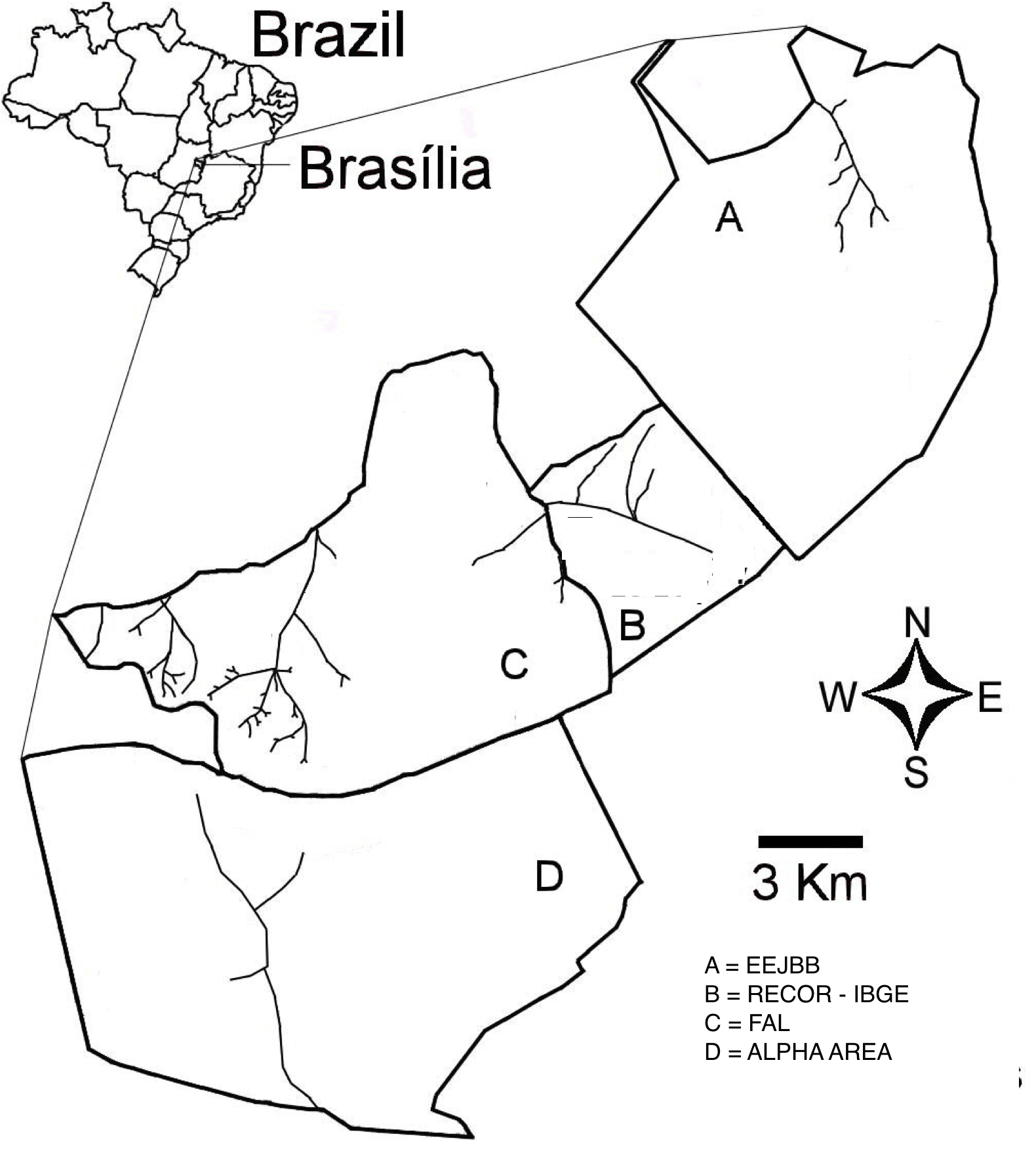
The “Área de Proteção Ambiental das Bacias do Gama e Cabeça de Veado” (AGCV) is located in the central area of the Cerrado domain in Brazil. This area of environmental protection is important due to its strategic localization as a buffer area between urban areas and the natural environments in DF, and by harboring hydric resources from two basins. There are three contiguous conservation units located inside the AGCV: Estação Ecológica do Jardim Botânico de Brasília (EEJBB; Ecologica Station of the Botanic Garden of Brasilia), the Reserva Ecológica do Roncador - IBGE (Recor - IBGE; Roncador Ecological Reserve) and Fazenda Água Limpa (FAL; Agua Limpa Farm, the ecological and agricultural field station of the Universidade de Brasília. In addition to those there is a contiguous 5,000-h area which is well-preserved, locally known as Alpha area. This latter and the three other conservation units are located 25 km SW of Brasília, Federal District, and together comprise about 15,000 ha in the core part of the Cerrado domain. A mosaic of Cerrado vegetation, including open vegetation, typical savanna formations, and forests occur in the region.
-

Research plot was moderate influenced by immisions (fluorine, SO2, tar, dust etc.) from aluminium smelter in Žiar nad Hronom (away 7 km).
-
Permanent research site Polana Biosphere reserve (Hukavský grúň) site is located in central Slovakia, in the east part of territory of Polana Protected Landscape Area , where forest ecosystems as well as rural cultural landscape of the highest volcanic mountain in Slovakia is protected. The site is situated in 850 m a.s.l with annual mean temperature 5.5 °C and annual precipitation 860 mm. Tree species composition of this site is made up by beech (70 %), norway spruce (19,6 %) and the rest is composited by fir, maple and ash. The age of this forest stand is 90 – 120 years. The research site was established in 1991 and from the beginning research has focused on the individual components of the forest environment and the forest ecosystem (trees including the rhizosphere, soil, air quality), their relationships (the influence of the atmospheric deposition ande on the woods), the cycle of elements and substances (nutrition, litter, biochemical processes), physiological processes, phenology and tree growth , their vitality and ecological stability, as well as practical forestry issues such as natural and artificial regeneration. So there was a very wide range of detection, measurement and evaluation. This area was in 1995 integrated with the ICP Forests system of permanent monitoring areas (PMA). Close to the forest monitoring plot is a series of other 7 permanent research areas (PRA), as a base for comparison close-to-nature mixed forest stand development and stands of individual tree species.
-
The Connell Rainforest Plot Network long-term forest dynamics plot of Davies Creek is located in the Dinden National Park circa 25 km southwest of Cairns, Northern Queensland. Temporal visits occur between 1 to 6 years. Between 2012 and 2018 the Connell Rainforest Plot Network was a member of Long Term Ecological Research Network (LTERN), Australia, a facility of the Australian Government's Terrestrial Ecosystem Research Network (TERN).
-
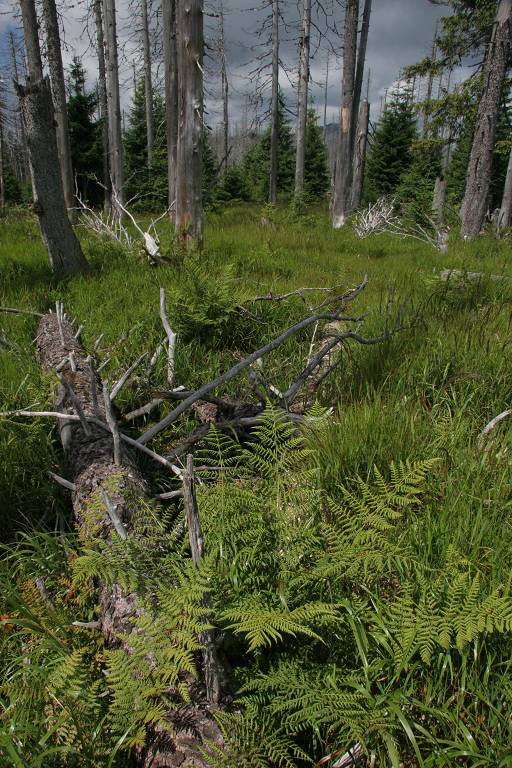
Site consists of a large set of mountain spruce forest monitoring plots (388) that have been monitored since 2008. The main focus of monitoring is the effect of cessation or reduction of forest management on vegetation dynamics and the recovery of forest from windthrow and/or bark beetle-induced die off. Each plot of the monitoring network (500 m2) is studied using the Field-Map technology and the following characteristics are measured: plot characteristics, location and characteristics of all trees (living, dead), stumps and dead wood, numbers and quantitative / qualitative characteristics of natural regeneration and plant community composition. The type of forests include Calamagrostis spruce forests (L9.1), Bog and waterlogged spruce forests (L9.2), and Athyrium spruce forests (L9.3).
-
Forest inventory data of LTER Zöbelboden. Beginning in 1992 permanent inventory plots covering the site (64-70) and three intensiv monitoring plots (IP1, IP2, IP3) characterising the main forest types have been recorded approximately every 5 years. The data comprises tree species identity and status, tree height, canopy height, breast diameter among other parameters describing forest structure.

